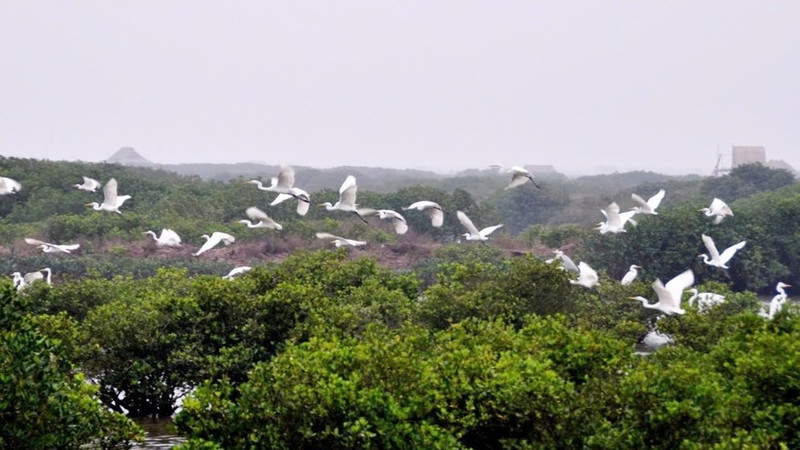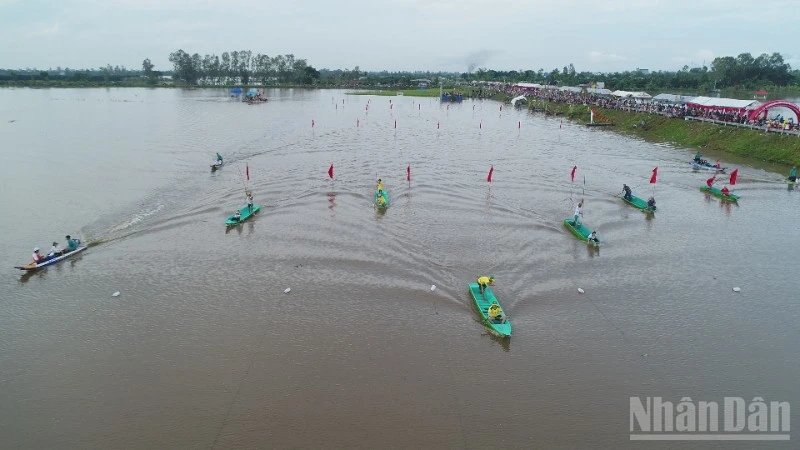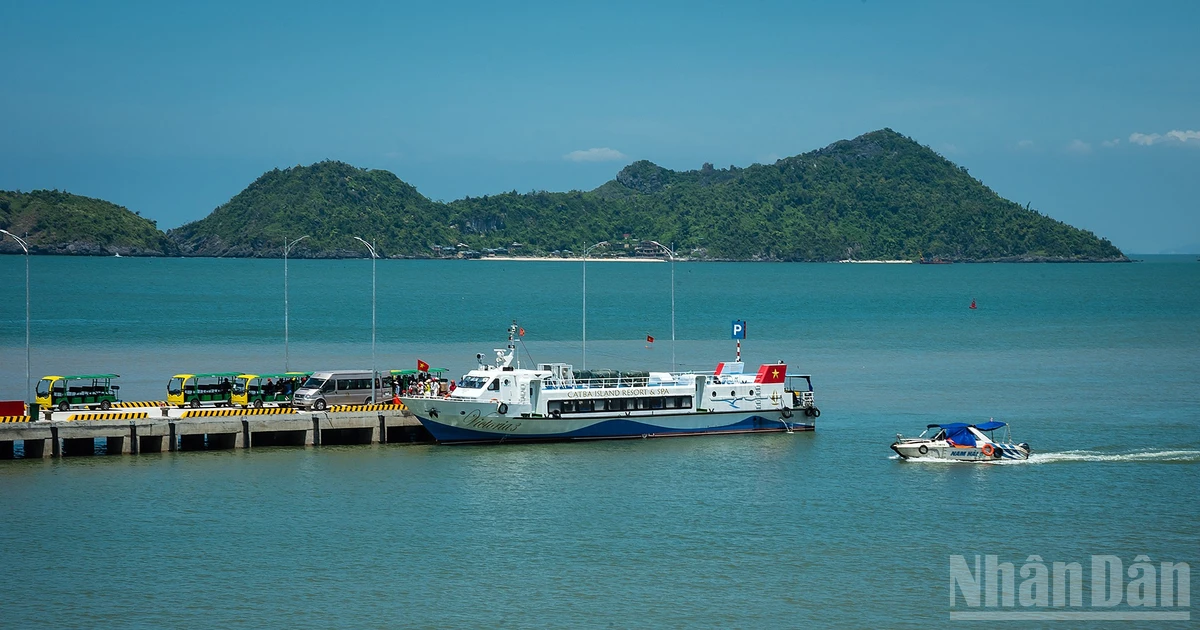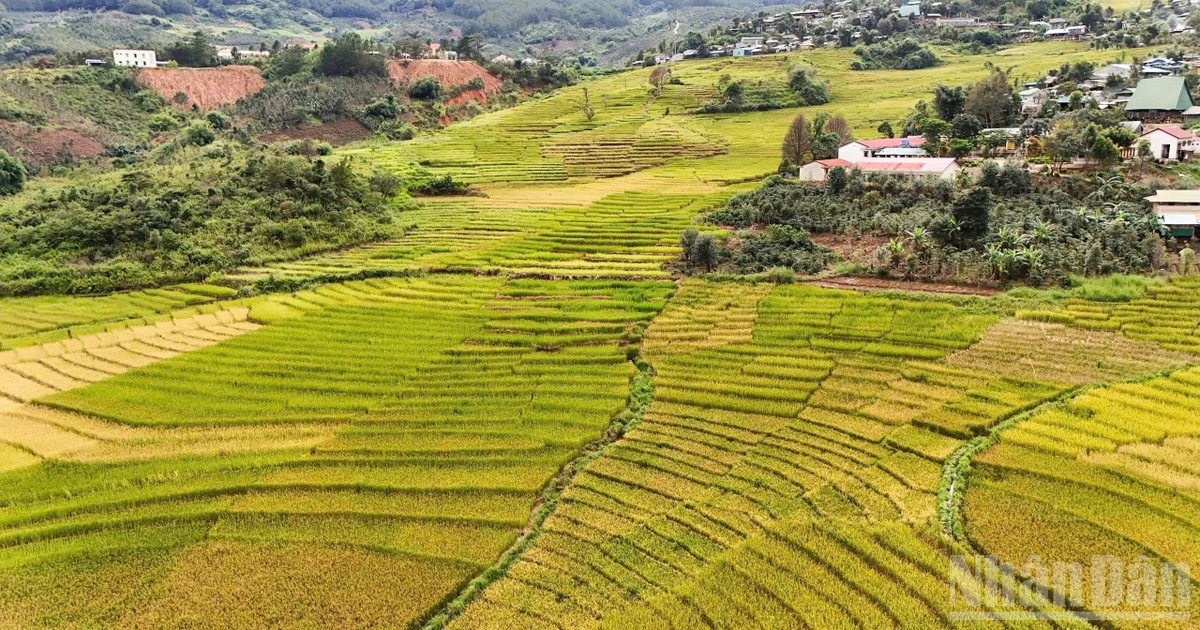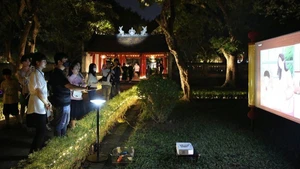At the break of dawn, Pham Vu Anh, Deputy Director of Xuan Thuy National Park, was already waiting for us at the ferry pier. The park’s motorboat slowly weaved through the riverside trees to leave the dock and head upstream towards the river mouth.
Along the waterway, mangrove species blossomed with vibrant purple-pink flowers in full bloom. Beneath the dense foliage, countless beehives owned by local beekeepers and those from neighbouring provinces had been placed to harvest honey.
The motorboat slipped through the mangrove canopy and then raced straight out to the Ba Lat estuary, the final point where the Red River merges into the sea.
In the past, Ba Lat was a vital waterway gateway to the Thang Long Citadel (Ha Noi). Today, it marks the natural boundary between Ninh Binh Province and Hung Yen Province.
Ngo Duc Dang from Giao Minh Commune, Ninh Binh Province, who has 30 years of experience farming extensive ponds for shrimp, crab, and fish in this mangrove area, said that every summer, the mangrove lands bustle with activity.
The extensive pond farming models for shrimp, crab, and fish in the Xuan Thuy mangrove area have long provided livelihoods for locals, reducing costs while producing high-quality seafood with minimal harm to the natural environment.
Local people fish for sweet crabs, don shellfish, mussels, and razor clams; traders flock here to make purchases; hundreds of beehives are placed to collect floral nectar; and pond owners begin the overlapping cycle of releasing new fry for the following month.
The extensive pond farming models for shrimp, crab, and fish in the Xuan Thuy mangrove area have long provided livelihoods for locals, reducing costs while producing high-quality seafood with minimal harm to the natural environment.
On average, each pond owner here earns several hundred million to one billion dong per year. The area has dozens of seafood wholesale points.
For instance, Pham Van Hiet’s main wholesale depot in Giao Hoa Commune purchases over 500 kilograms daily of oysters, mussels, and sweet crabs, which are then sorted, packaged, and delivered to restaurants.
Hiet said seafood demand in this region is very high. During the sweet crab season, locals can catch several kilograms within a few hours to sell to traders at a price of 110,000 VND to 120,000 VND per kilogram, earning between 200,000 VND and 500,000 VND daily, with some days reaching 1 million VND.
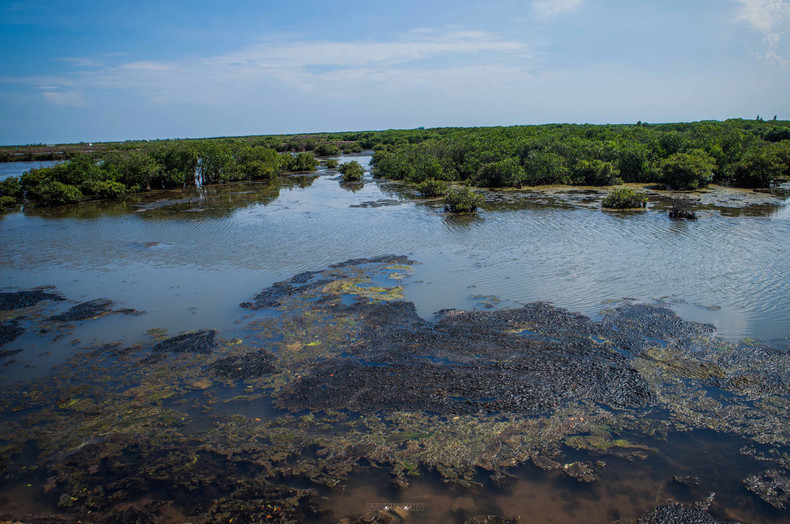
Director of Xuan Thuy National Park, Doan Cao Cuong, shared that thanks to its diverse ecosystem, the park has recorded many plant communities and 386 species of large benthic invertebrates. These are tropical species widely distributed along the western Pacific coastline.
Particularly, Xuan Thuy National Park is likened to an “international bird station” for migratory waterbirds, including many rare species.
Cuong noted that field surveys have recorded 222 bird species, 166 of which are migratory. In winter, migratory birds escape the cold from the north to winter here, while in the summer-autumn season, birds migrate southwards to avoid the heat, such as jacanas and pelicans from southern provinces and Cambodia, using this area as a cooling refuge during their annual migratory cycle.
Thanks to its diverse ecosystem, the park has recorded many plant communities and 386 species of large benthic invertebrates
Notably, in March 2023, conservation experts discovered the presence of the fishing cat in this area. This species is classified as endangered by the International Union for Conservation of Nature (IUCN) and included in Viet Nam’s 2007 Red Book of threatened species.
Every month, the local Party cell organises meetings to popularise information on mangrove forest conservation and sustainable livelihoods. This has greatly raised community awareness about environmental protection, wildlife conservation, and preserving natural forests.
Visitors to Xuan Thuy National Park — a mangrove area shaped over centuries by the fertile alluvium of the Red River — can witness the evolving life of coastal fishermen and explore the pristine beauty of the mangrove forest.
